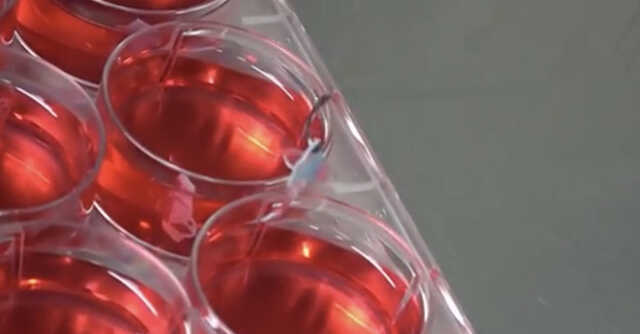
This robot fish, made from human cardiac cells, could one day pave the way for artificial hearts


Scientists have created a robot fish, whose swimming muscles are made with the cardiac muscle cells of a human heart. Albeit not being the first study of its kind, the research showcases the promise of creating an artificial heart. The eventual goal, as researchers have had over time, is to see how robust and strong a mechanical and regularly moving object can be, when artificially created with human cardiac muscles.
Such a technology, as the study says, could one day validate the production of a human heart. The robotic fishes, created by a team of scientists including Keel Yong Lee, Kevin Kit Parker and others, resemble zebra fishes. They feature cardiac cells on either side of their tail fins. When one side contracts, the other stretches to make the tail move — thereby propelling the fish forward.
The eventual goal behind such a study is to see whether the human cells embedded in an artificial body could withstand the rigours of regular, beating movement. Given that the heart is a permanently beating organ, cardiac muscles are one of the strongest and most durable muscles in the entire human body. It is this that an artificial heart has to successfully replicate, if they are to become medicinal viability.

The research abstract published in Science journal says, “These cells generate autonomous, rhythmic, antagonistic muscle movements that are either light induced or self paced, thus exploiting both the mechanoelectrical signaling and automaticity of cardiac cells. The biohybrid fish showed increased performance over previous biohybrids and provided insight into how mechano-electrical signaling can be used for self-paced muscle actuation.”
In simpler terms, the study sought to validate if an artificial cardiac configuration could last rigorous usage periods, when left to working autonomously. Such biohybrid pumps, which these artificial heart mechanisms are referred as, have also been previously experimented with bodies such as the Parker’s Disease Biophysics Group.
The scientists in the study have said that the eventual goal is to create a model robust enough to help replace human hearts with issues such as arrhythmia.

